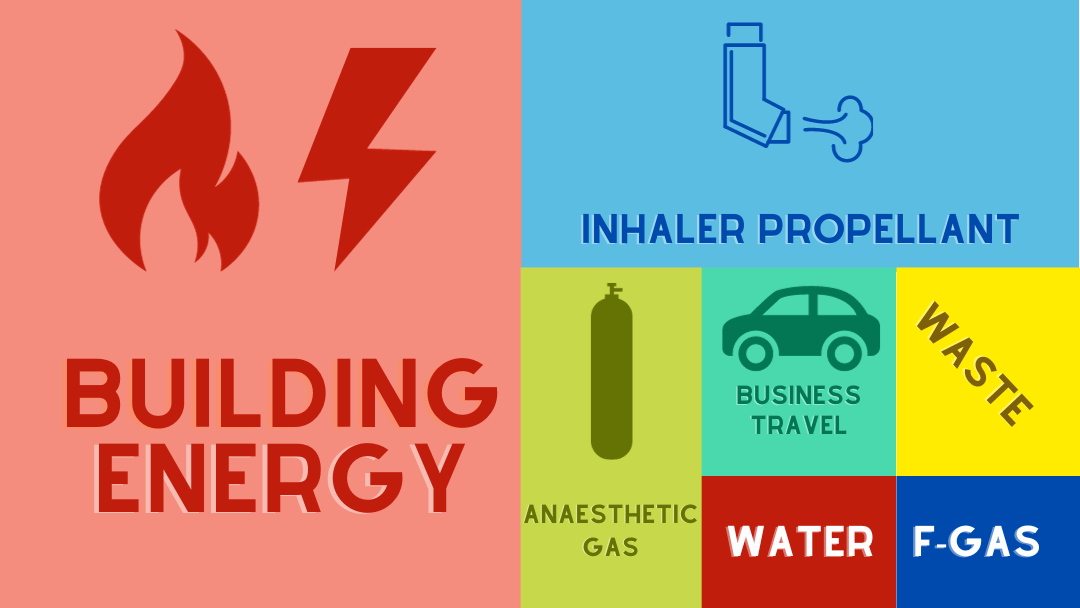The results of NHS Lanarkshire’s Public Bodies Climate Change Duties Report are out. The report outlines the board’s measured carbon emissions over 2022/2023 and where the largest carbon impacts are.
All Scottish health boards complete the report and submit to the Scottish Government, in order to monitor progress towards the 2040 net zero target. The report is used to track each boards carbon emission reduction progress and highlight the areas that need to be focused on to reduce.
Craig Brown, Head of Sustainability & Environmental Performance, NHS Lanarkshire, said: “It’s important that staff are informed on our carbon impact so that we can all help to make improvements in our carbon emissions. Small acts such as all turning the lights/computer screens off at the end of the day and avoiding use of energy intensive personal heaters and mini fridges can all make a difference, as well as being the best placed to inform on processes undertaken that could be made less carbon intensive.
“This year the Sustainability Team has worked on improving the quantity and quality of the data gathered on our carbon emissions, including reporting on business travel for the first time. Improved data collection has meant that the figure reported on our carbon emissions has gone up over all, however the figures give a more accurate picture of our total carbon emissions.
“This means that we can better target where we need to take action in reducing our impact. We have some exciting carbon reduction projects in the pipeline that we are working to inform on in the coming year, which will help us on our way to becoming net zero.”
To give some perspective on the greatest challenges NHS Lanarkshire faces in becoming net zero by 2040, the below shows where the carbon emissions come from within the board, in order of impact:
- Building Energy – 61% of NHS Lanarkshire’s carbon emissions come from the energy needed to maintain its buildings, this includes the gas used to provide buildings with heating and hot water, the electricity used and the unseen energy losses from the distribution of gas and electricity. The majority of our carbon emissions come from using gas to heat our buildings, which presents itself as the largest challenge the board faces in decarbonising to a carbon neutral alternative.
- Inhaler Propellant – 26% of NHS Lanarkshire’s carbon emissions come from Metered Dose Inhalers. These contain a gas which is used as a propellant to administer the medication, this gas also has a very high global warming potential which is 1400 to 3200 times more potent than carbon dioxide. This high global warming potential puts it at second on our list for carbon impact and presents a great challenge to reduce emissions. Solutions include prescribing dry powder inhalers in place of metered dose inhalers that do not use a harmful propellant.
- Anaesthetic Gases – 5% of NHS Lanarkshire’s carbon emissions come from use of anaesthetic gases. These gases can have a very high global warming potential, however work within NHS Lanarkshire’s Green Theatres Group has been instrumental in the reducing the use of those with the greatest carbon impact, such as desflurane.
- Business Travel – 3% of our emissions come from travel required to undertake business, such as staff working in the community and other necessary business trips taken.
- Waste – 2% of our emissions come from the waste created, the majority of carbon emissions in the waste category come from disposal of clinical waste as this waste cannot be recycled and has to be disposed of by incineration. This is why ensuring waste goes into the correct bin is really important in minimising the impact of disposal.
- Fleet – 2% of our emissions come from use of our fleet. Fast progress has been made in converting our fleet from combustion engines to electric vehicles, although the greatest challenge remains in decarbonising our heavier fleet.
- Water Use – 0.4% of our emissions come from the use and treatment of water.
- Refrigerant Gases (F-Gas) – 0.3% of our emissions come from the loss of fluorinated gases through leakage or system removal, these f-gases are contained in heating/cooling systems, refrigerators and heat pumps.



